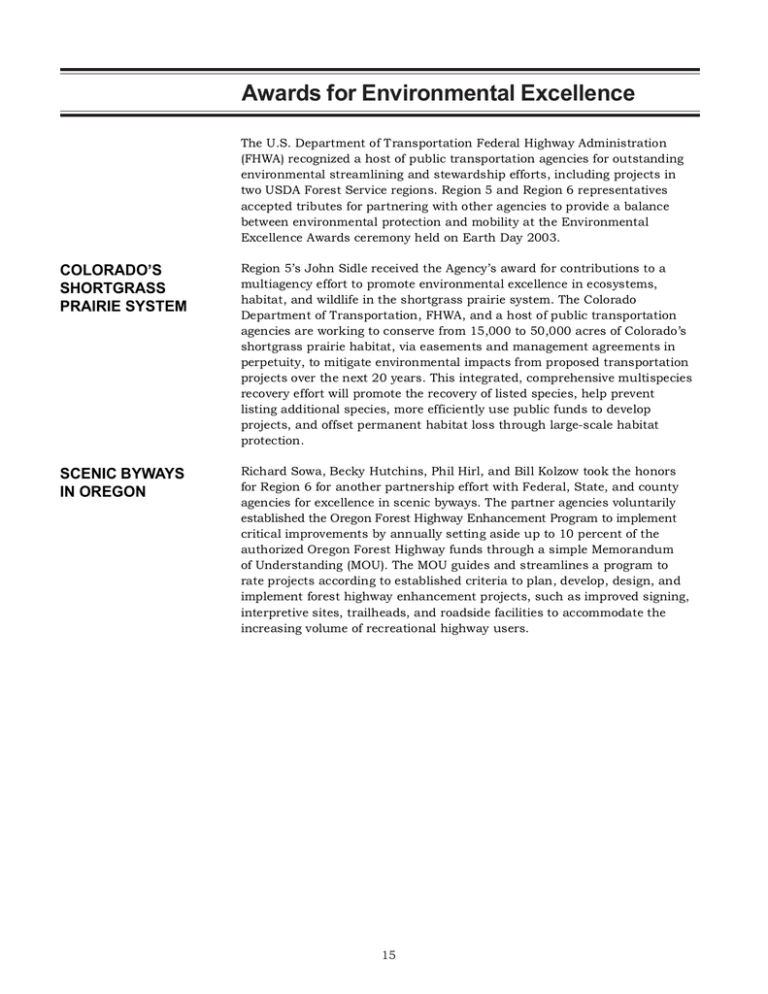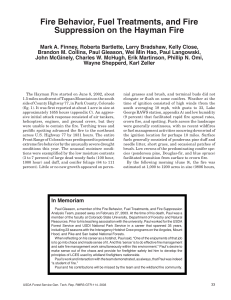Awards for Environmental Excellence
advertisement

Awards for Environmental Excellence The U.S. Department of Transportation Federal Highway Administration (FHWA) recognized a host of public transportation agencies for outstanding environmental streamlining and stewardship efforts, including projects in two USDA Forest Service regions. Region 5 and Region 6 representatives accepted tributes for partnering with other agencies to provide a balance between environmental protection and mobility at the Environmental Excellence Awards ceremony held on Earth Day 2003. COLORADO’S SHORTGRASS PRAIRIE SYSTEM Region 5’s John Sidle received the Agency’s award for contributions to a multiagency effort to promote environmental excellence in ecosystems, habitat, and wildlife in the shortgrass prairie system. The Colorado Department of Transportation, FHWA, and a host of public transportation agencies are working to conserve from 15,000 to 50,000 acres of Colorado’s shortgrass prairie habitat, via easements and management agreements in perpetuity, to mitigate environmental impacts from proposed transportation projects over the next 20 years. This integrated, comprehensive multispecies recovery effort will promote the recovery of listed species, help prevent listing additional species, more efficiently use public funds to develop projects, and offset permanent habitat loss through large-scale habitat protection. SCENIC BYWAYS IN OREGON Richard Sowa, Becky Hutchins, Phil Hirl, and Bill Kolzow took the honors for Region 6 for another partnership effort with Federal, State, and county agencies for excellence in scenic byways. The partner agencies voluntarily established the Oregon Forest Highway Enhancement Program to implement critical improvements by annually setting aside up to 10 percent of the authorized Oregon Forest Highway funds through a simple Memorandum of Understanding (MOU). The MOU guides and streamlines a program to rate projects according to established criteria to plan, develop, design, and implement forest highway enhancement projects, such as improved signing, interpretive sites, trailheads, and roadside facilities to accommodate the increasing volume of recreational highway users. 15



